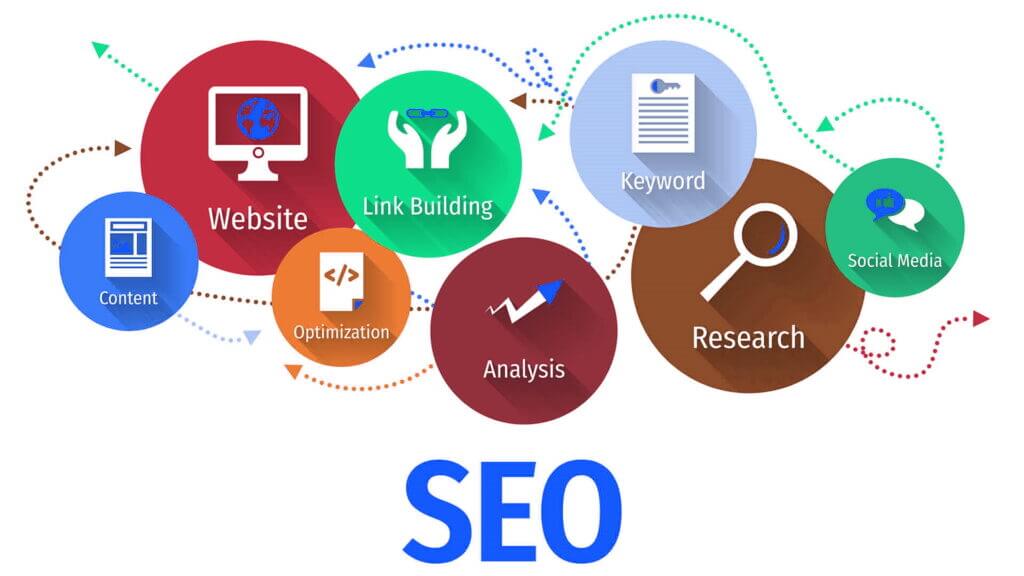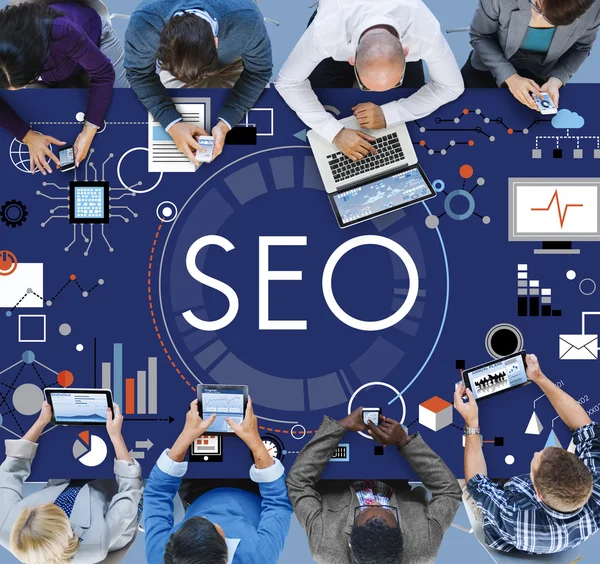10 SEO Strategies That Improved Conversion Rates by 200% in 2025
Table of Contents
10 SEO Strategies That Improved Conversion Rates by 200% in 2025
In the ever-evolving landscape of digital marketing, staying ahead of the curve is crucial. As we delve into 2025, the focus on search engine optimization (SEO) has never been more pivotal for businesses aiming to enhance their conversion rates.

With the right SEO strategies, companies can significantly boost their rankings and conversions, achieving unparalleled success in their digital endeavors. This article explores the top 10 SEO strategies that have proven to improve conversion rates by 200% in 2025, offering insights into the most effective trends and techniques shaping the future of SEO.
Search Engine Optimization (SEO) Marketing
Client:
ANJ Plumbing - Anjservices.com
Category:
Digital Marketing
Start Date:
10 March, 2021
End Date:
Still Growing
Keywords Growth
+475% Top 10 Keyword Rankings
Leads growth
+266% Monthly Lead Growth
Conversion
+346% Conversion increase
Live Chat
+120% Live Chat Request increase
What are the most effective SEO trends shaping 2025?
1. User Intent Content Clusters
Create main topic pages with linked subtopics based on user search patterns. Build comprehensive guides that answer all related user questions. Link these pages together with clear navigation paths. Track user behavior to refine content based on actual search patterns.
2. Speed-Optimized Mobile Landing Pages
Use AMP or PWA technology to achieve sub-2-second load times. Remove all unnecessary scripts and optimize images for instant loading. Focus on critical content delivery in the first viewport. Test speed scores weekly and fix any performance drops.
3. AI-Driven Personalized Search Journeys
Implement AI tools to track user behavior and customize content display. Show different content versions based on user search history and preferences. Create dynamic CTAs that change based on user intent signals. Test various content combinations for different user segments.
4. Voice Search Answer Optimization
Structure content to match natural language voice queries. Create FAQ sections with direct answers to common voice questions. Use schema markup to help search engines identify quick answers. Focus on conversational keywords and long-tail phrases.
5. Visual Search E-commerce Integration
Add multiple high-quality product images with detailed alt texts. Enable visual search functionality on product pages. Use image sitemaps to help search engines index visual content. Implement image schema markup for better visual search results.
6. Micro-Conversion Funnel Mapping
Track small user actions that lead to final conversions. Create content specific to each micro-conversion step. Test different CTAs for various funnel stages. Optimize each touchpoint based on user behavior data.
7. Local SEO Hyperlocal Targeting
Create location-specific landing pages with unique local content. Use local schema markup and Google Business Profile optimization. Generate location-based reviews and citations. Target neighborhood-specific keywords and phrases.
8. Featured Snippet Position Zero Optimization
Structure content to directly answer specific questions. Use clear headings and bullet points for easy snippet extraction. Include step-by-step guides and definitions. Monitor and optimize for featured snippet opportunities.
9. Core Web Vitals Perfect Score Implementation
Achieve perfect scores in LCP, FID, and CLS metrics. Monitor real user metrics through Chrome User Experience Report. Fix layout shifts and interaction delays immediately. Use server-side rendering for faster content delivery.
10. E-E-A-T Content Authority Building
Get content reviewed by industry experts and add their credentials. Include original research and data in your content. Build author expertise pages with verified credentials. Link to authoritative sources and get expert quotes.
Would you like me to provide specific implementation steps or examples for any of these strategies?
How AI is revolutionizing SEO in 2025
Artificial Intelligence (AI) is at the forefront of SEO trends in 2025, transforming how marketers approach search engine optimization. AI tools like predictive analytics are being utilized to forecast SEO trends, allowing businesses to stay competitive by anticipating shifts in search engine algorithms. These tools provide valuable insights into user behavior and search intent, enabling more precise keyword targeting and content creation. By leveraging AI, companies can optimize their SEO strategies, ensuring their content is not only relevant but also engaging, which ultimately boosts conversion rates. The integration of AI into SEO efforts is proving to be a game-changer, driving significant improvements in both visibility and user experience.
The rise of voice search optimization
Voice search is rapidly becoming a dominant force in the SEO landscape, with more users relying on voice-activated devices to perform queries. This trend in 2025 is compelling businesses to optimize their content for voice search to maintain their SEO ranking. As voice searches often differ from traditional text-based queries, focusing on natural language and conversational keywords has become essential. By tailoring content to meet the nuances of voice search, companies can improve their search engine results pages (SERPs) visibility. This shift not only enhances user experience but also increases the likelihood of conversions, as users find the information they are looking for more efficiently.
Video SEO: A game-changer for visibility and engagement
Video SEO is emerging as a pivotal strategy in 2025, offering a powerful means to enhance visibility and user engagement. As video content becomes increasingly popular, optimizing videos for search engines is crucial for achieving higher rankings. By incorporating relevant keywords, creating compelling meta descriptions, and utilizing schema markup, businesses can ensure their videos appear prominently in search results. This approach not only boosts visibility but also encourages longer user engagement, as video content is often more engaging than text. As a result, companies that effectively implement video SEO strategies are witnessing a significant increase in conversion rates, making it an indispensable tool in the SEO arsenal.

How can businesses leverage local SEO for improved conversions?
Businesses can significantly enhance their conversion rates by strategically leveraging local SEO. By utilizing the best SEO tools, organizations can optimize their online presence to target specific geographic areas, thereby attracting local customers. These tools facilitate the identification of relevant keywords, enabling businesses to tailor their content effectively. Furthermore, maintaining accurate and consistent business information across various platforms ensures higher visibility in local search results, ultimately driving more traffic to their websites and increasing the likelihood of conversions.
Optimizing for "near me" searches and Google My Business
Local SEO is becoming increasingly vital for businesses aiming to capture local markets and improve conversions. In 2025, optimizing for "near me" searches is crucial, as more consumers use mobile devices to find nearby services. By ensuring their Google My Business listings are accurate and up-to-date, companies can enhance their local search visibility. This includes providing detailed business information, customer reviews, and engaging photos, which contribute to higher rankings in local search results. As a result, businesses that effectively leverage local SEO can attract more local customers, boosting both foot traffic and conversion rates.
The importance of user-generated content in local SEO
User-generated content (UGC) is playing a pivotal role in local SEO strategies for 2025. Encouraging customers to leave reviews and share their experiences online not only enhances a business's credibility but also improves its search engine ranking. Search engines like Google value authentic and fresh content, making UGC a powerful tool for boosting visibility. By actively engaging with customers and fostering a community of loyal patrons, businesses can improve their local SEO efforts. This approach not only attracts new customers but also strengthens relationships with existing ones, resulting in increased conversions and sustained growth.
What role do Core Web Vitals play in SEO success for 2025?
In the evolving landscape of search engine optimization, Core Web Vitals are poised to play a pivotal role in determining SEO success for 2025. These metrics, which assess user experience through loading performance, interactivity, and visual stability, are increasingly integrated into the algorithms of major search engines. Utilizing best SEO tools to monitor and enhance these vital metrics will be essential for website owners seeking to improve their rankings and attract organic traffic.
As user expectations continue to rise, the emphasis on delivering a seamless browsing experience will only intensify. Websites that prioritize Core Web Vitals will not only enhance user satisfaction but also align with search engine priorities. Consequently, leveraging best SEO tools to optimize these performance indicators will be critical for maintaining competitive advantage in the digital marketplace.
Understanding the impact of page experience on rankings
Core Web Vitals have become a crucial component of SEO success in 2025, as they directly impact a website's page experience and search engine ranking. These metrics, which include loading performance, interactivity, and visual stability, are essential for ensuring a seamless user experience. Google has emphasized the importance of Core Web Vitals in its ranking algorithm, making it imperative for businesses to optimize their websites accordingly. By focusing on these vital metrics, companies can not only improve their rankings but also enhance user satisfaction, leading to higher conversion rates. As such, understanding and optimizing Core Web Vitals is key to achieving SEO success in 2025.
Strategies to improve Core Web Vitals scores
Improving Core Web Vitals scores requires a strategic approach to website optimization. Businesses should prioritize enhancing loading speed by optimizing images, leveraging browser caching, and minimizing CSS and JavaScript. Additionally, ensuring a responsive design that adapts to various devices can significantly improve interactivity and visual stability. By conducting regular audits using tools like Google Search Console, companies can identify areas for improvement and implement changes effectively. These strategies not only boost Core Web Vitals scores but also contribute to a better user experience, ultimately leading to higher conversion rates and SEO success in 2025.
Case studies: How Core Web Vitals optimization boosted conversions
Numerous case studies have demonstrated the positive impact of Core Web Vitals optimization on conversion rates. For instance, an eCommerce company that focused on improving its loading performance saw a 30% increase in conversions within six months. By addressing issues related to interactivity and visual stability, another business experienced a 25% boost in customer engagement and sales. These success stories highlight the importance of prioritizing Core Web Vitals in SEO strategies for 2025. By optimizing these metrics, companies can not only improve their search engine rankings but also enhance user experience, resulting in significant increases in conversion rates.
How can content strategies be optimized for both users and search engines in 2025?
In 2025, optimizing content strategies for both users and search engines necessitates a multifaceted approach. Employing best seo tools will enable marketers to analyze user behavior and search engine algorithms effectively. By prioritizing high-quality, relevant content tailored to user intent, businesses can enhance engagement and retention. Additionally, leveraging data-driven insights from best seo tools will facilitate the continuous refinement of content, ensuring that it remains aligned with evolving search engine criteria and user preferences.
Balancing keyword optimization with user intent
In 2025, successful content strategies require a delicate balance between keyword optimization and user intent. While incorporating relevant keywords is essential for SEO, understanding and addressing the needs of users is equally important. By analyzing search intent, businesses can create content that resonates with their audience, leading to higher engagement and conversions. This approach involves crafting content that provides value, answers queries, and fulfills user expectations. By prioritizing user intent alongside keyword optimization, companies can achieve better search engine rankings and foster stronger connections with their audience, ultimately boosting conversion rates.
The power of long-form, high-quality content
Long-form, high-quality content is gaining prominence in SEO strategies for 2025, as it offers numerous benefits for both search engines and users. Comprehensive and well-researched content tends to rank higher in search engine results, as it demonstrates authority and expertise. Furthermore, long-form content keeps users engaged for longer periods, increasing the likelihood of conversions. By focusing on creating in-depth articles, guides, and reports, businesses can establish themselves as industry leaders and attract a loyal audience. This approach not only enhances SEO efforts but also drives significant improvements in conversion rates, making it a vital component of successful content strategies.
Leveraging schema markup for enhanced search results
Schema markup is an essential tool for optimizing content strategies in 2025, as it provides search engines with additional context about a webpage's content. By implementing schema markup, businesses can enhance their search results with rich snippets, which improve visibility and click-through rates. This structured data helps search engines understand the content better, leading to higher rankings and improved user experience. By leveraging schema markup, companies can differentiate themselves from competitors and attract more organic traffic. This approach not only boosts SEO efforts but also contributes to higher conversion rates, making it a crucial aspect of modern content strategies.
What are the latest mobile SEO techniques driving conversion rates?
As businesses prepare to enhance their digital presence, understanding the SEO trends for 2025 becomes imperative. Implementing effective marketing strategies that align with emerging consumer behaviors is essential for success.
Among the top SEO techniques, optimizing for voice search and ensuring mobile-first indexing will be crucial. To improve your strategy in 2025, businesses must also focus on page speed and user experience, as these factors significantly influence conversion rates.
Staying abreast of the trends for 2025 will enable organizations to develop a robust strategy in 2025, ultimately driving higher engagement and conversions.
Mobile-first indexing: Ensuring your site is fully optimized
With the increasing reliance on mobile devices, mobile-first indexing has become a critical aspect of SEO in 2025. Ensuring a site is fully optimized for mobile devices is essential for achieving higher rankings and improved conversion rates. This involves creating a responsive design, optimizing images and videos for mobile, and ensuring fast loading speeds. By prioritizing mobile optimization, businesses can enhance user experience and cater to the growing number of mobile users. This approach not only boosts SEO success but also drives significant improvements in conversion rates, as users are more likely to engage with mobile-friendly websites.
Accelerated Mobile Pages (AMP) and their impact on SEO
Accelerated Mobile Pages (AMP) are playing a significant role in mobile SEO strategies for 2025, as they offer a streamlined and fast-loading experience for mobile users. By implementing AMP, businesses can ensure their content loads quickly and efficiently, reducing bounce rates and improving user engagement. This enhanced user experience contributes to higher search engine rankings and increased visibility in mobile search results. As a result, companies that adopt AMP in their SEO strategies are witnessing significant boosts in conversion rates, making it an indispensable tool for mobile optimization and SEO success.

How can businesses use AI-powered tools to boost their SEO efforts?
In today's competitive landscape, businesses can leverage AI-powered tools to enhance their marketing strategies and significantly boost their search rankings. By utilizing these advanced technologies, organizations can discover the top SEO trends and implement new SEO techniques that align with evolving consumer behaviors.
Moreover, these tools facilitate improving technical SEO, ensuring that websites are optimized for search engines. Consequently, these strategies will help in improving your conversion rate by delivering more relevant and informational content to users, ultimately enabling businesses to stay on top of their competition.
Leveraging AI for keyword research and content creation
AI-powered tools are revolutionizing keyword research and content creation in 2025, offering businesses a competitive edge in their SEO efforts. By analyzing vast amounts of data, these tools provide valuable insights into keyword trends, search intent, and user behavior. This information enables companies to create highly targeted and relevant content that resonates with their audience. Additionally, AI tools can assist in generating content ideas, optimizing existing content, and predicting future trends. By leveraging AI in their SEO strategies, businesses can enhance their visibility, improve search engine rankings, and ultimately boost conversion rates.
Predictive analytics: Using AI to forecast SEO trends
Predictive analytics is becoming an integral part of SEO strategies in 2025, as it allows businesses to anticipate and adapt to changing trends in the digital landscape. By leveraging AI-powered predictive analytics, companies can gain insights into future search engine algorithms, user behavior, and market dynamics. This foresight enables businesses to make informed decisions about their SEO strategies, ensuring they stay ahead of the competition. By proactively adjusting their approaches based on predictive analytics, companies can enhance their SEO success, improve conversion rates, and achieve sustained growth in the ever-evolving digital world.
What are the most effective on-page SEO strategies for 2025?
To improve your strategy in 2025, it is essential to adopt the top SEO strategies that align with emerging SEO trends for 2025. Understanding search intent is crucial, as it enables businesses to tailor their SEO content effectively. Tools like Google Analytics can assist in analyzing SEO performance and identifying opportunities for conversion rate optimization. Additionally, focusing on snippet optimization will enhance visibility in search results, particularly for ecommerce platforms.
As SEO experts predict, the latest SEO developments will emphasize the integration of content and SEO strategies. Businesses looking for information on how to improve your strategy in 2025 should prioritize modern SEO techniques that resonate with user queries. Discovering the best SEO tools for tracking rankings and traffic will also be pivotal in navigating the evolving landscape of digital marketing.
Optimizing meta descriptions and title tags for higher click-through rates
On-page SEO strategies in 2025 place significant emphasis on optimizing meta descriptions and title tags to achieve higher click-through rates (CTR). These elements serve as the first point of contact between a webpage and potential visitors, making them crucial for attracting clicks. By crafting compelling and informative meta descriptions and title tags, businesses can entice users to click on their links in search engine results pages. This approach not only improves visibility but also enhances user experience, as users are more likely to engage with content that aligns with their search intent. As a result, optimizing these on-page elements is essential for boosting conversion rates and achieving SEO success.
The role of internal linking in improving site structure and user experience
Internal linking is a fundamental aspect of on-page SEO strategies for 2025, as it plays a vital role in improving site structure and user experience. By strategically linking related content within a website, businesses can guide users through their site, encouraging them to explore more pages. This approach not only enhances user engagement but also helps search engines understand the hierarchy and relevance of content. By implementing effective internal linking strategies, companies can improve their SEO ranking, increase page views, and ultimately boost conversion rates. As such, internal linking is a crucial component of successful on-page SEO in 2025.
Implementing semantic SEO for better context and relevance
Semantic SEO is emerging as a key strategy in 2025, as it focuses on understanding the context and meaning behind search queries. By implementing semantic SEO, businesses can create content that aligns with user intent, providing more relevant and valuable information. This approach involves using natural language processing and entity recognition to optimize content for search engines. By enhancing the context and relevance of their content, companies can improve their search engine rankings and attract more organic traffic. As a result, implementing semantic SEO is essential for achieving higher conversion rates and maintaining a competitive edge in the digital landscape.




